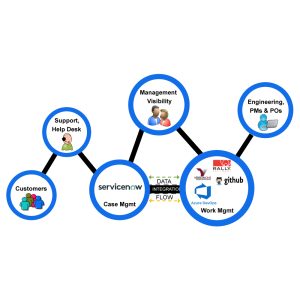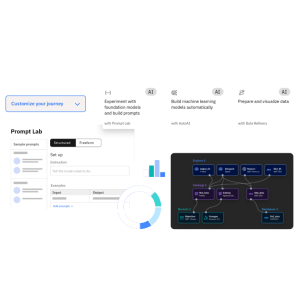Organizations today are increasingly seeking robust solutions to streamline operations, enhance decision-making, and drive efficiency. IBM Watson Studio, integrated within the IBM Cloud Pak ecosystem, emerges as a pivotal tool in achieving these objectives. By facilitating workflow automation and intelligent automation, Watson Studio empowers businesses to harness the full potential of their data assets.
This comprehensive checklist serves as a guide for deploying IBM Watson Studio, ensuring that enterprises can seamlessly integrate automated decision-making processes and optimize their workflows. By following this guide, organizations can effectively harness the power of IBM Watson Studio to drive innovation, improve efficiency, and achieve their strategic objectives.
1. Define Objectives and Scope
- Identify Business Goals: Clearly outline the objectives you aim to achieve with Watson Studio, such as improving data analysis, automating workflows, or enhancing predictive modeling.
- Determine Scope: Assess the departments or processes that will be impacted, ensuring alignment with organizational strategies.
- Stakeholder Engagement: Engage key stakeholders early to gather requirements and foster collaboration.
2. Infrastructure Assessment
- Evaluate Current Infrastructure: Assess existing hardware, software, and network capabilities to ensure compatibility with Watson Studio requirements.
- Cloud vs. On-Premises: Decide between deploying Watson Studio on IBM Cloud, on-premises, or in a hybrid environment based on organizational needs.
- Scalability Considerations: Ensure the infrastructure can scale to accommodate future growth and increased data processing demands.
3. Environment Setup
- Provision IBM Cloud Pak: Set up IBM Cloud Pak for Data, which provides the foundational platform for Watson Studio.
- Install Watson Studio: Deploy Watson Studio within the Cloud Pak environment, ensuring all dependencies and services are correctly configured.
- Configure Access Controls: Implement role-based access controls to manage user permissions and data security.
4. Data Preparation and Integration
- Data Inventory: Catalog existing data sources, including structured and unstructured data, to identify what will be integrated into Watson Studio.
- Data Cleansing: Perform data cleansing to ensure accuracy and consistency, which is critical for reliable analytics.
- Integration with Data Sources: Establish connections to various data repositories, such as databases, data lakes, and external APIs, facilitating seamless data flow into Watson Studio.
5. Workflow Automation Implementation
- Design Workflows: Map out business processes that can be automated, identifying tasks that are repetitive and time-consuming.
- Develop Automation Scripts: Utilize Watson Studio’s tools to create scripts and models that automate identified workflows.
- Testing and Validation: Conduct thorough testing to ensure automated workflows perform as intended and deliver expected outcomes.
6. Intelligent Automation and Decision-Making
- Integrate AI Models: Incorporate machine learning and AI models into workflows to enable intelligent decision-making capabilities.
- Continuous Learning: Implement mechanisms for models to learn and improve over time, adapting to new data and scenarios.
- Monitor Performance: Regularly assess the performance of AI models, ensuring they provide accurate and valuable insights.
7. User Training and Change Management
- Training Programs: Develop comprehensive training programs for users to effectively utilize Watson Studio’s features and tools.
- Support Resources: Provide accessible support materials, such as user guides and tutorials, to assist users in adopting new workflows.
- Feedback Mechanisms: Establish channels for users to provide feedback, facilitating continuous improvement of automated processes.
8. Governance and Compliance
- Data Governance Policies: Implement policies to manage data quality, privacy, and security within Watson Studio.
- Compliance Monitoring: Ensure that automated workflows comply with relevant regulations and industry standards.
- Audit Trails: Maintain detailed logs of automated processes and decisions for accountability and auditing purposes.
9. Performance Monitoring and Optimization
- Key Performance Indicators (KPIs): Define KPIs to measure the effectiveness of automated workflows and decision-making processes.
- Regular Reviews: Conduct periodic reviews of system performance, identifying areas for optimization and enhancement.
- Scalability Planning: Plan for scaling automated processes to accommodate increased workloads and organizational growth.
10. Continuous Improvement
- Feedback Integration: Incorporate user and stakeholder feedback into ongoing development and refinement of automated workflows.
- Stay Updated: Keep abreast of updates and new features in Watson Studio and IBM Cloud Pak to leverage advancements in automation technology.
- Innovation Encouragement: Foster a culture of innovation, encouraging teams to explore new automation opportunities and improvements.
Deploying IBM Watson Studio for workflow automation is a strategic move towards enhancing operational efficiency and intelligent decision-making. By following this comprehensive checklist, organizations can ensure a structured and effective deployment, unlocking the full potential of their data assets within the IBM Cloud Pak ecosystem.




